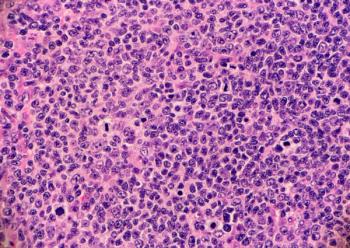Key takeaways
AI is reshaping oncology trials: AI is accelerating everything from biomarker analysis to eligibility criteria, offering significant gains in diagnostic accuracy and treatment personalization.
Bispecifics show promise—but safety remains top of mind: Bispecific antibody therapies are gaining traction across tumor types, but trial design must proactively address associated toxicity risks.
New lung cancer regimens expand front-line options: Combination therapies in extensive-stage small cell and KRAS G12C-mutated non-small cell lung cancer are redefining standard-of-care expectations.
Nearly 50,000 attendees from the world of oncology research and development, including service partners, clinicians, patient advocates, and more, came together at the 61st annual American Society of Clinical Oncology meeting May 30 to June 3 to confer about the progress the industry is making to advance cancer care worldwide. Despite recent events that herald changes to research funding, healthcare policy and regulations, and additional layers to the existing complexities within oncology drug development, the meeting provided an energizing and collaborative platform for engaging others with a shared passion to elevate cancer care.
The spectrum of innovations coming out of the global oncology community is truly remarkable, with thousands of poster presentations and hundreds of oral sessions touching on significant movement across numerous cancer types and subtypes and patient populations. It is critical that scientific advances in oncology are purposeful, measurable, and intent on elevating the daily lives of patients and their loved ones. As such, we took special interest in the following lessons coming out of ASCO, which may drive actionable change for patients in need.
Expanding cancer care possibilities with well-designed AI
From exploring and understanding patient journeys within specific types of cancer via de-identified patient data to evaluating nuances of treatment pathways and fine-tuning decisions regarding clinical trial endpoints and eligibility criteria, the possibilities of artificial intelligence (AI)-powered cancer care are expanding quickly. As such, there was no shortage of discussions around the use of well-designed AI to strengthen oncology R&D.
Examples shared at ASCO this year of how wide-ranging the potential use of AI is in cancer care include:
- Study findings indicate the use of an AI-assisted biomarker interpretation training model has helped pathologists improve accuracy of HER2-targeted immunohistochemistry scoring. Helping pathologists to better identify neoplastic cells, total tumor cell count, percentage of each cell class and a final HER2 score lets these experts more accurately classify HER2-low and HER2 ultralow breast cancers and reduce the rate of misclassifying these tumors as HER2-null. Study findings showed pathologist concordance for classification improved from 66.7% without AI assistance to 88.5% with AI, allowing clinicians to better identify patients eligible for HER2-targeted antibody drug conjugates.
- Analyzing prostate cancer tumor samples via biopsy images from 1,000 men with high-risk prostate cancer that had not spread and who were enrolled in the U.K.-based STAMPEDE trial, a new AI test developed by precision medicine company Artera, Inc. helped researchers identify which men with prostate cancer may benefit from the hormone therapy abiraterone alongside standard hormone therapy. The new AI test analyzed biopsy images and found that, for patients with biomarker-positive tumors, abiraterone with standard hormone therapy reduced the risk of death after five years by nearly half (from 17% to 9%). The test also helps determine who may benefit from standard therapy alone to avoid an additional treatment that causes additional adverse events.
ASCO also announced its collaboration with Google Cloud to create its new AI-powered ASCO Guidelines Assistant. This tool provides a purposeful chatbot designed to give clinicians easier and quicker access to ASCO’s collection of evidence-based clinical guidelines to improve their ability to make critical decisions about patient care.
Proceeding with cautious optimism: Bispecific antibodies
Breakthrough data findings in cancer care discussed at ASCO 2025 excited attendees. However, with any new area of progress comes questions and nuances to consider when determining how the new finding truly fits into care paradigms, and ultimately, what patients need.
Bispecific antibodies engaging T cells, a newer treatment that providers may consider, are showing progress across various types of cancer, but stakeholders are proceeding with caution due to concerns about potential toxicity and mitigation. With the progress in bispecific antibody development noted below, the industry is also aiming to mitigate and manage the related safety concern regarding cytokine release syndrome and immune effector cell-associated neurotoxicity syndrome, toxicities that can occur with t-cell engagers.
- Findings were presented from a Phase I/II trial examining a first-in-class mRNA-encoded bispecific antibody BNT142, which targets Claudin 6 and CD3 in patients with CLDN6-positive advanced solid tumors, such as testicular, ovarian, non-small cell lung cancer, etc. As the first clinical proof-of-concept for an mRNA-encoded bispecific antibody, the study evaluated weekly BNT142 treatments with premedication, including fluids and antihistamines, to better determine optimal dosing levels. Preliminary results indicate the therapy has a manageable safety profile and promising anti-tumor activity at higher doses.
- Potentially practice-changing results were discussedfrom the DeLLphi-304 Phase III study of the bispecific T-cell engager tarlatamab for patients with extensive-stage small cell lung cancer that has recurred or progressed after platinum-based chemotherapy. Compared to patients who received standard-of-care chemotherapy, those treated with tarlatamab demonstrated a longer overall survival of 13.6 months compared to 8.3 months, as well as a longer progression-free survival and an improvement in cancer-related symptoms. This survival advantage is particularly impressive because it includes patients whose cancer had already spread to the brain. As important, the side effects for patients treated with tarlatamab were less severe than for those receiving chemotherapy, emphasizing the need to incorporate patient tolerability and effective toxicity mitigation strategies into treatment decisions.
- Pasritamig, a first-in-class bispecific antibody that signals the human kallikrein 2 target, demonstrated promising antitumor activity in metastatic castration-resistant prostate cancer, achieving more than 50% PSA reduction in 42.4% of patients, with a favorable safety profile and no reported cases of immune effector cell-associated neurotoxicity syndrome.
Broadening options for advanced lung cancer
Because advanced lung cancers are difficult to treat, every year the industry aims to see and hear about the clinically meaningful steps toward bettering progression of survival. Many attendees wanted to learn about combination therapy regimens that may give patients living with this debilitating cancer hope for longer survival while building on what’s known to improve future personalized treatment strategies and standards.
Coming out of ASCO, we found the following points of progress in advanced lung cancer noteworthy:
- The Phase III IMforte study evaluated lurbinectedin and atezolizumab as a first-line maintenance treatment regimen for patients with extensive-stage small cell lung cancer. Findings showed that patients receiving the combination therapy extended overall survival from 10.6 to 13.2 months and had a 27% reduction in risk of death compared to those receiving atezolizumab alone. These findings are particularly significant because this is the first global Phase III study to show progression-free survival and overall survival improvement with first-line maintenance treatment for ES-SCLC and it supports maintenance with this combination therapy as a new option for patients with this aggressive disease.
- Data presented from the Phase II KRYSTAL-7 study showed that the combination of adagrasib and pembrolizumab offers promising efficacy and tolerability as first-line treatment for patients with untreated KRAS G12C-mutated non-small cell lung cancer, potentially offering a chemotherapy-free regimen option. In patients with PD-L1 expression of 50% or higher, the progression-free survival rate was 50.7% at 18 months. These results represent the largest dataset evaluating a first-line KRAS G12C inhibitor plus PD-L1 inhibitor in this population presented to date.
From vision to realistic action
The oncology drug development landscape is increasingly complex, with many changes we must account for as we look ahead. However, experiencing the collective push of innovation past known boundaries at ASCO this year was very motivating.
Every year, as an industry, we leave this key stakeholder gathering inching closer to making our dreams in cancer care a realistic possibility. In many cases, the groundbreaking advances in drug development just several years ago are rapidly becoming standard of care, with an ever-growing percentage of patients receiving life-extending benefits. That is due to industry-wide efforts to build upon our collection of insights to focus the treatment pathways pursued on those that promise realistic progress for patients.
As a community, let’s aim to stay encouraged and continue to build on our knowledge, expertise and experience to make a genuine impact in patients’ lives.
Shadi Cinpinski, MHA, Director, Therapeutic Strategy, Oncology; Jim Routt, Vice President and Unit Head, Oncology Global Therapeutic Delivery; and Jennifer Underwood, MSc, Senior Director, Therapeutic Strategy, Oncology; all with IQVIA







.png)



.png)



.png)
.png)
